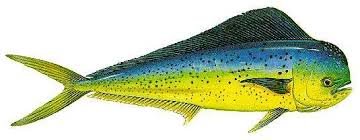The Dorado Fish (Mahi-Mahi)
Table of Contents
The ocean, with its vast and mysterious depths, harbors many fascinating marine species. Among them, the Dorado fish, scientifically known as Coryphaena hippurus but commonly referred to as Mahi-Mahi or dolphinfish, stands out as a vibrant and sought-after catch for anglers worldwide. In this comprehensive guide, we will delve into the world of the Dorado fish, exploring its habitat, nutritional benefits, and effective baiting strategies.
Dorado Fish (Mahi-Mahi) Key Facts
Scientific Name: Coryphaena hippurus
Also Known As: Mahi mahi, Dolphinfish, Dorado, Shiira
Weight: 15-30lbs
Peak Months: January, April to June, December
Where Are Dorado Fish (Mahi-Mahi) Found?
“Mahi” in Hawaiian means strong, and “mahi-mahi” means very strong. Mahi-Mahi are pelagic fish, meaning they inhabit the open ocean rather than staying close to the coast. These strikingly colored fish prefer warm waters and are commonly found in tropical and subtropical regions around the world. In particular, the waters of the Atlantic, Pacific, and Indian Oceans provide ideal conditions for the Dorado fish to thrive.
The distribution of Mahi-Mahi is influenced by various factors such as water temperature, ocean currents, and the availability of prey. These fish are often associated with floating debris, seaweed, or sargassum mats, as these provide shelter for smaller fish and crustaceans – the primary prey of Dorado. Anglers often target these floating structures when searching for Dorado, as they serve as natural meeting points for both predator and prey.
Dorado (Mahi-Mahi) Fishing Season in Hawaii
The Dorado fish can be caught throughout most of the year in Hawaii, but we have noticed that we catch more in the winter months (December to January). The Mahi-Mahi fish migrate south during the winter and pass right by Hawaii. Besides the winter, we’ve also seen increased numbers around April, May, and June as well.
Are Dorado (Mahi-Mahi) Nutritious?
Hawaii Dorado (Mahi-mahi) Nutrient Label From HawaiiSeafood²
Beyond its vibrant appearance and elusive nature, the Dorado fish is renowned for its delicious and nutritious flesh. Mahi-Mahi is a lean source of protein that is low in saturated fats, making it a healthy option for those conscious of their diet. It’s also rich in omega-3 fatty acids, which are known for their cardiovascular benefits.
In addition to being a heart-healthy choice, Mahi-Mahi is a good source of essential vitamins and minerals, including vitamin B12, niacin, phosphorus, and selenium. These nutrients play crucial roles in supporting various bodily functions, from maintaining healthy nerve function to promoting strong bones.
The mild flavor and firm texture of Mahi-Mahi make it a versatile ingredient in the kitchen. Whether grilled, baked, or pan-seared, this fish adapts well to a variety of cooking methods, making it a favorite among seafood enthusiasts. Since the average weight of the Mahi-Mahi fish is less than 30 lbs, it’s also a very easy fish to clean and work with.
What are the Best Baiting Strategies for Dorado (Mahi-Mahi)?
Lure Selection:
Mahi-Mahi are known for their affinity towards brightly colored lures. Lure options that mimic the colors of their natural prey, such as flying fish or small squid, are particularly effective. Consider using lures with a combination of greens, blues, and yellows to attract the attention of these visually oriented predators.
Live Bait:
Offering live bait is a tried-and-true method for enticing Mahi-Mahi. Small fish like ballyhoo, mackerel, or sardines are excellent choices. Ensure that your live bait is lively and swimming freely to attract the attention of Dorado in the vicinity.
Trolling Speed:
Mahi-Mahi are known to be fast swimmers, and trolling is a popular technique for catching them. Maintain a trolling speed between 6 to 8 knots, as this mimics the pace at which Dorado typically chase down their prey. Adjust your trolling speed based on conditions and the behavior of the fish.
Chumming:
Chumming, the practice of dispersing a mixture of fish parts and other attractants into the water, can be highly effective for attracting Mahi-Mahi. This technique stimulates their natural feeding instincts and draws them closer to your boat. Be mindful of the environmental impact and use biodegradable chum to minimize ecological consequences.
Targeting Floating Structures:
As mentioned earlier, Mahi-Mahi often congregate around floating debris or sargassum mats. When fishing in offshore waters, keep an eye out for these structures, as they serve as hotspots for Dorado activity. Casting around such areas with appropriate bait can yield rewarding results.

